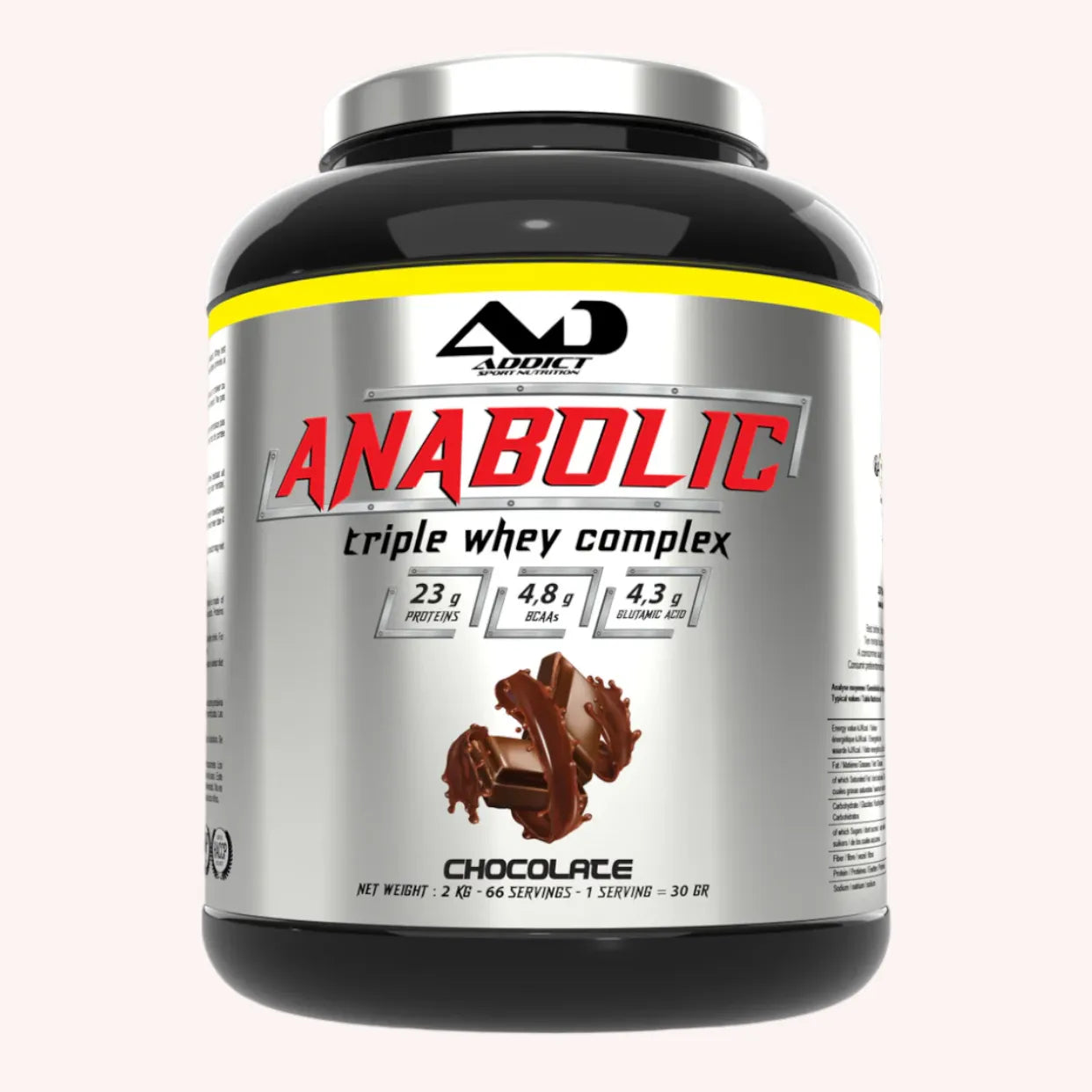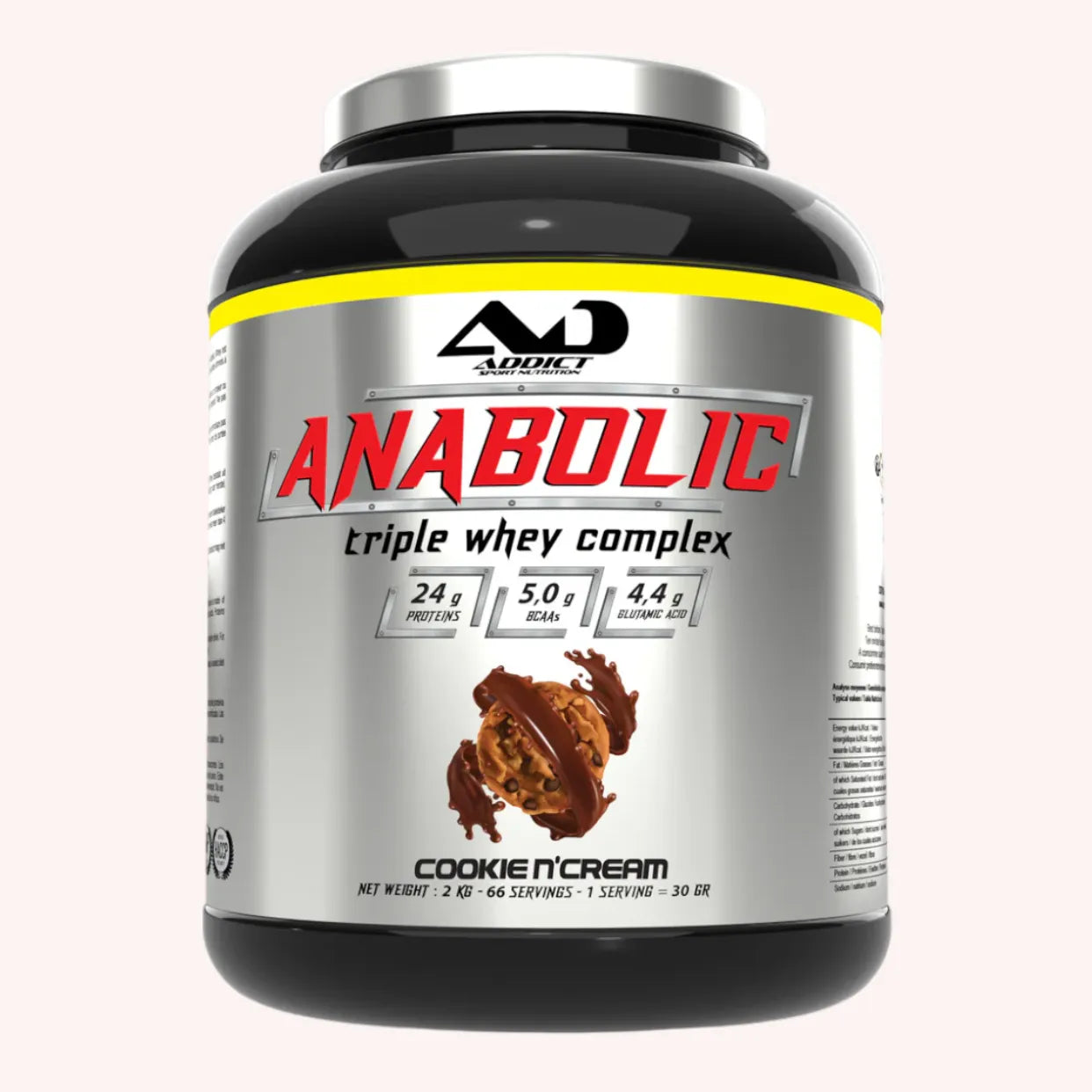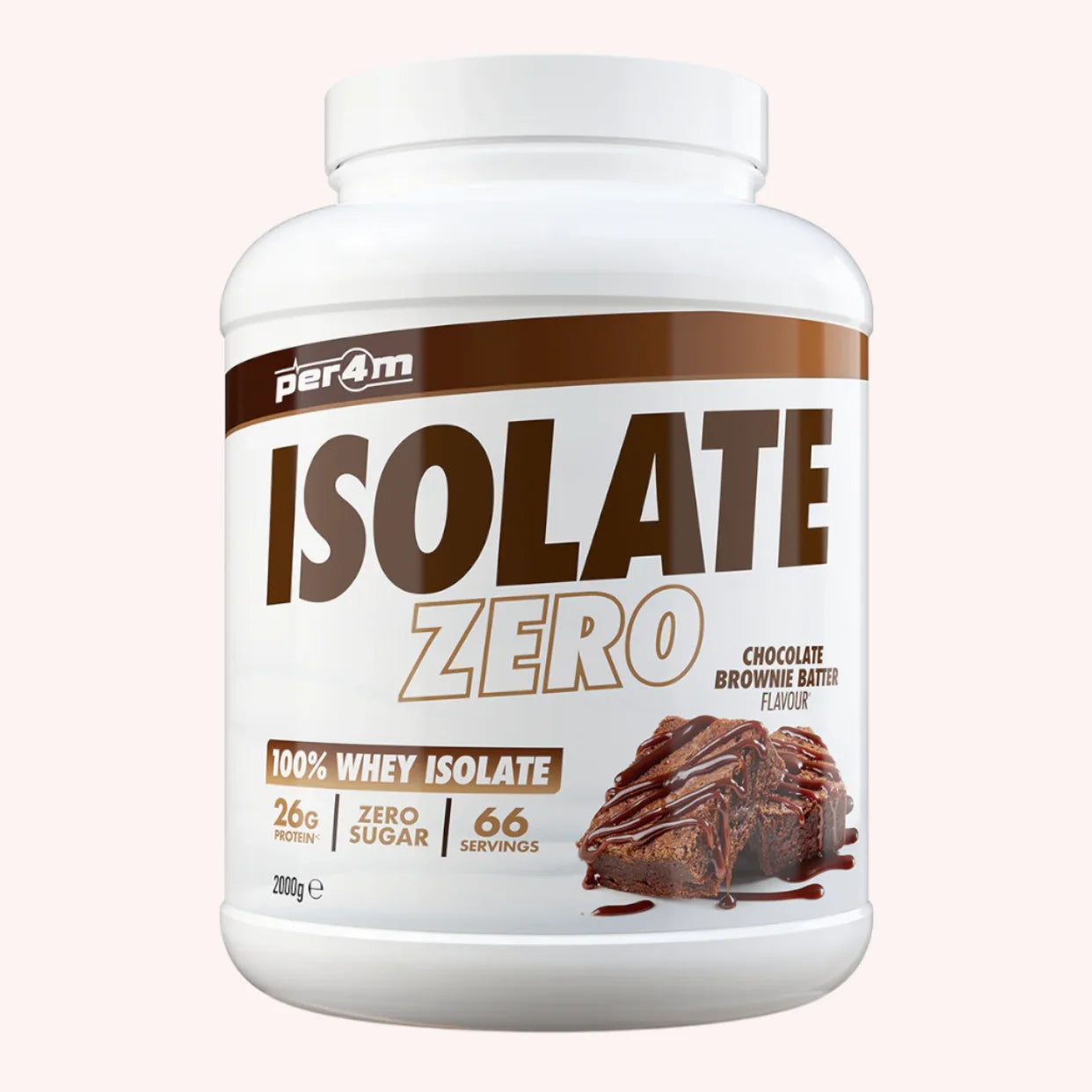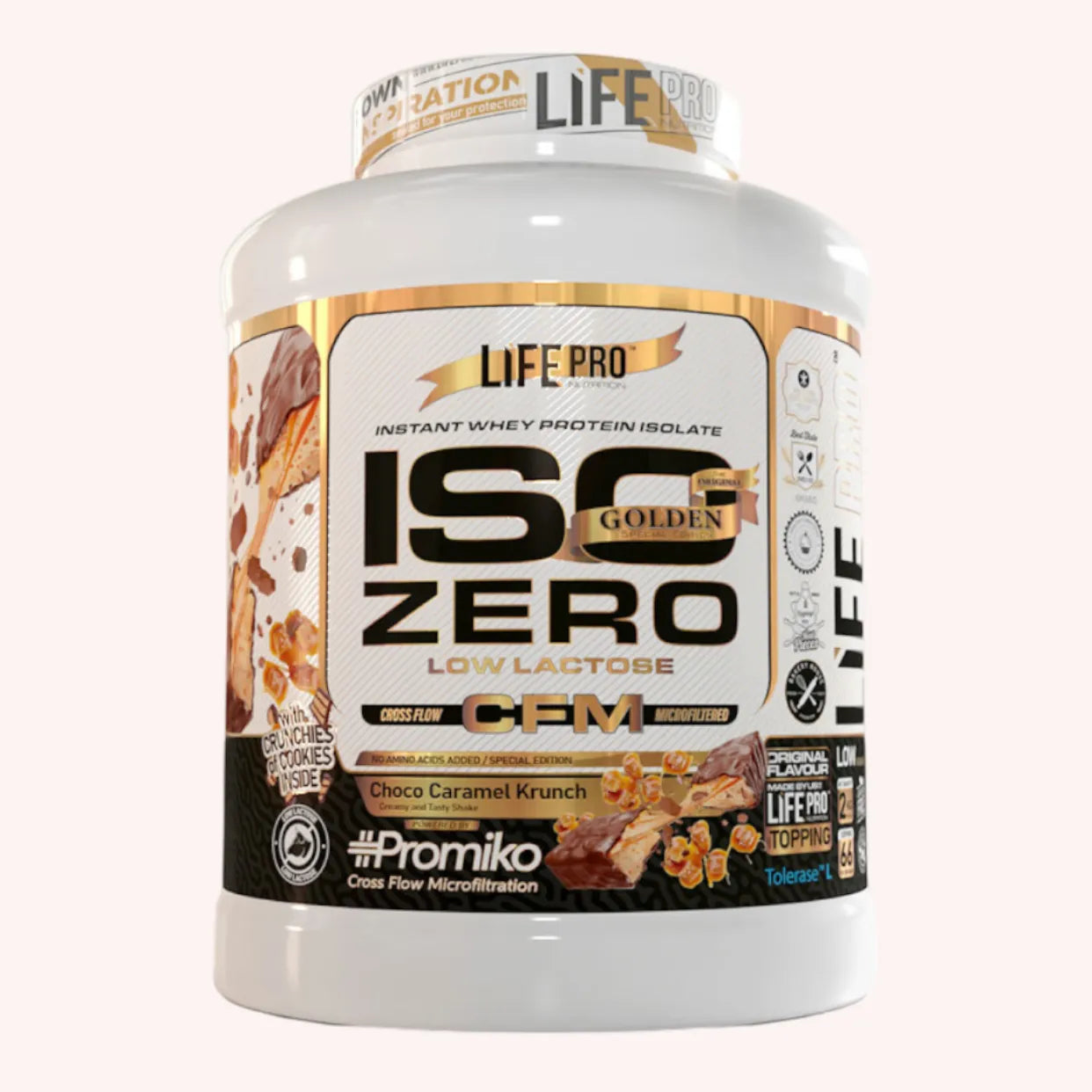Protein has always been a central topic in nutrition, and more specifically in sports nutrition. These biological macromolecules are at the heart of the diet of those looking to improve their performance , build muscle mass or optimize their recovery .
However, protein intake recommendations vary greatly depending on your goals, activity level, and type of exercise. Here, we'll explain how much protein you should consume each day to meet your specific needs.
The role of proteins in the body
Proteins are made up of amino acids, some of which are essential because the body cannot synthesize them. Amino acids play a key role in the repair and growth of muscle tissue , but also in the production of enzymes , hormones , and the maintenance of immunity .
For athletes, the primary benefit of protein lies in its ability to stimulate muscle synthesis and prevent muscle breakdown after exercise. A protein-rich diet is therefore essential for any active person looking to maximize their performance.
Protein needs of a sedentary person
Protein requirements for sedentary individuals are quite modest. According to EFSA (European Food Safety Authority) recommendations, a healthy adult should consume approximately 0.83 g/kg of body weight per day. This means that a person weighing 70 kg should aim for a daily intake of 58 to 60 g of protein. This level of intake is sufficient to maintain muscle mass and ensure basic physiological functions.
However, these minimum recommendations can be revised upwards depending on health and fitness goals. For example, for an adult who wants to improve their body composition or increase their vitality , aiming for 1 g/kg of body weight is often more appropriate.
Protein and bodybuilding: How much to gain muscle?
When it comes to mass gain , protein needs increase significantly. Several studies suggest that an intake of between 1.6 and 2.2 g/kg is ideal for stimulating muscle growth while minimizing fat gain. This intake can be even higher (up to 3.3 g/kg) as part of a high-calorie diet for those looking to optimize the quality of their mass gain , avoiding excessive accumulation of adipose tissue.
Practical example: Let's take an 80 kg athlete aiming to gain muscle mass . With a consumption of 2 g/kg, he should consume approximately 160 g of protein per day . This can translate into a diet consisting of:
- Breakfast: 30g of protein (e.g. omelet with 3 eggs + 200g of cottage cheese)
- Morning snack: 20g of protein (e.g. a handful of almonds + 150g of Greek yogurt)
- Lunch: 40g of protein (e.g. 200g of chicken + 100g of quinoa)
- Post-workout snack: 25g of protein (e.g. 30g of whey + a banana)
- Dinner: 30g of protein (e.g. 200g of salmon + mixed vegetables)
- Bedtime snack: 15g of protein (e.g. 200g of cottage cheese)
This distribution helps maintain a constant protein intake throughout the day , promoting better muscle protein synthesis.
Protein and Weight Loss: What is the Optimal Intake?
When losing weight , maintaining a high protein intake is essential to preserve muscle mass while reducing fat tissue. Weight loss , especially during a calorie deficit, can lead to muscle loss if protein intake is insufficient. Recommendations for fat loss in athletes range from 1.6 to 2.4 g/kg per day. This intake can even be as high as 3.1 g/kg for people who combine intensive training with a low-calorie diet.
A high protein intake helps maintain satiety, which can reduce the urge to snack and make it easier to stick to your diet . It also promotes thermogenesis, a process where the body expends more energy digesting and metabolizing protein compared to carbohydrates or fats.
Protein requirements for endurance sports
Athletes involved in endurance sports , such as running or cycling , have specific protein needs to promote recovery and limit muscle breakdown due to prolonged exertion. Unlike strength sports , where the focus is on muscle growth , the primary goal for endurance athletes is to preserve lean mass while optimizing recovery .
Recommendations generally range from 1.2 to 1.6 g/kg of body weight per day. This range can be adjusted depending on training load and competition periods when recovery needs are greater.
Protein Fractionation: A Key Factor for Performance
Protein absorption is an often overlooked aspect, but it has a significant impact on the effectiveness of protein intake. Research shows that it is more beneficial to spread protein intake over several meals rather than concentrating a large amount at a single time of day. Ideally, each serving should contain between 20 and 40 g of protein, or the equivalent of 0.25 to 0.4 g/kg of body weight.
This split helps maintain a constant flow of amino acids in the blood, thus maximizing protein synthesis and reducing muscle breakdown. For example, an efficient split for a 90 kg athlete might be:
- Breakfast: 30g of protein
- Morning snack: 20g of protein
- Lunch: 40g of protein
- Post-workout snack: 30g of protein
- Dinner: 30g of protein
- Bedtime snack: 20g of protein
Animal Proteins vs. Plant Proteins: Which Choices Should You Choose?
The debate between animal and plant proteins remains a hot topic, especially today as more and more people are turning to vegetarian or vegan diets. Animal proteins, such as those from meat, fish, eggs, or dairy products, are considered complete because they contain all the essential amino acids. They are also known for their high biological value, meaning their ability to be easily absorbed and utilized by the body.
Plant proteins, on the other hand, are often deficient in one or more essential amino acids. However, by combining different plant sources (e.g., legumes with grains), it is possible to cover all amino acid requirements. For athletes following a vegan diet, it is recommended to slightly increase total protein intake, to 1.8 to 2.4 g/kg of body weight, to compensate for potentially less efficient assimilation.
Optimizing recovery with protein
Post-workout recovery is an important time for athletes, especially after an intense or prolonged session. Protein plays a role by repairing damaged muscle fibers and stimulating muscle growth . The often-discussed anabolic window is a period during which the body is particularly receptive to the absorption of nutrients, especially protein.
It is recommended to consume between 0.25 and 0.4 g/kg of protein after training, combined with a source of carbohydrates to replenish glycogen stores. For example, a 75 kg athlete could consume 20 to 30 g of protein after their session, in the form of a whey protein shake or a snack such as a bowl of cottage cheese with fruit.
The potential risks of excess protein
While protein is definitely beneficial, excessive consumption can lead to imbalances. An intake above 3.5 g/kg per day generally provides no additional benefit and can even cause long-term problems. The kidneys, responsible for eliminating nitrogenous waste produced by protein breakdown, can be put under strain if overloaded.
It is therefore essential to follow the recommendations according to the objectives and not to exceed reasonable limits. Moreover, beyond a certain point, excess protein will not be used for muscle growth , but will be stored as fat or eliminated.
Adapt your contributions according to your objectives
To maximize the benefits of protein, it is essential to adapt it according to your specific objectives:
- Muscle mass gain: 1.6 to 2.2 g/kg per day, spread over 4 to 6 meals.
- Weight loss: 1.6 to 2.4 g/kg per day to preserve muscle mass .
- Endurance sports: 1.2 to 1.6 g/kg per day to promote recovery .
- Vegan or vegetarian diet: Increase intake to 1.8 to 2.4 g/kg to compensate for potentially lower absorption.
Protein and training types: What impact on needs?
Protein needs also vary depending on the type of training being performed. For strength athletes, such as weightlifters or powerlifters, needs are often higher due to the intense demands placed on muscle fibers. Strength-focused workouts require protein intake of up to 2.5 g/kg to maximize recovery and muscle growth .
On the other hand, for endurance sports, such as marathons or triathlons, priority is given to muscular endurance and recovery after prolonged efforts. An intake of 1.4 to 1.8 g/kg is generally sufficient.
The role of protein supplements
Protein supplements, such as whey , casein , or plant-based protein powder , are excellent substitutes for athletes looking to achieve their nutritional goals.
As a complement to a balanced diet , these supplements can help meet protein needs, especially when time constraints or dietary preferences limit access to quality natural food sources.
Understanding the different types of whey
Whey protein , derived from whey, is one of the most popular supplements for athletes and bodybuilders. There are several types of whey, each with its own specific characteristics:
- Whey Concentrate : This form of whey is the most common. It generally contains between 70 and 80% protein, with the remainder being carbohydrates and fats. It is ideal for those looking for a balance between quality and price, while still benefiting from the essential amino acids needed for muscle recovery .
- Whey Isolate : Whey isolate undergoes an additional filtration process, almost entirely removing carbohydrates and fats, for a protein concentration of over 90%. It is particularly recommended for those on a strict diet or looking to maximize their protein intake while minimizing calories.
- Hydrolyzed Whey : This type of whey is predigested, allowing for faster protein absorption by the body. It is ideal after an intense workout, when muscles need an immediate supply of amino acids to promote recovery and muscle synthesis.
- Clear Whey : Unlike traditional whey, clear whey is lighter, with a texture similar to a thirst-quenching drink. It combines the high protein content of whey isolate with a refreshing, fruity flavor, offering a pleasant alternative to creamy protein shakes.
- Vegan Whey : For those on a vegan or dairy-sensitive diet, vegan whey, made from plant-based proteins (often pea and rice), is a great alternative. While it has a different amino acid profile, it's still an effective option for increasing protein intake .
Why turn to whey?
While it's increasingly popular, many people still wonder what whey protein is used for. Whey protein is primarily used to support muscle growth and aid recovery after exercise. Thanks to its high content of branched-chain amino acids (BCAAs), including leucine, it effectively stimulates muscle protein synthesis, making it a popular supplement for maximizing muscle gains. Consuming a whey protein shake after a workout quickly provides your muscles with the nutrients they need for repair and growth.
In addition to its bodybuilding benefits, whey protein also helps control appetite and promote weight loss . Its satiating effect reduces snacking, which is beneficial for those looking to maintain a calorie deficit while dieting.
Precautions and contraindications
Although whey protein is generally well tolerated by most users, some people may experience digestive issues, particularly those who are lactose intolerant. To mitigate the whey protein risk, filtered versions such as whey isolate or hydrolyzed whey may be better suited, as they contain very little lactose.
It's also important not to overindulge in whey protein. Overconsumption of protein can lead to adverse effects, such as digestive upset and put additional strain on the kidneys, especially in people with a history of kidney problems.
Casein or Whey: What’s the difference?
Casein is another milk-based protein, but unlike whey, it digests slowly, making it an ideal pre-bedtime supplement. It gradually releases amino acids throughout the night, providing a continuous supply of nutrients during periods of prolonged fasting.
Combining whey after training and casein before sleep is a strategy often recommended to athletes to maximize their muscle growth and recovery time.
Proteins and timing: The importance of distributing your intake well
The timing of protein intake has long been debated. Should you consume your protein immediately after training? Is it necessary to consume protein before bed? Current research shows that, more than the precise timing, it's the even distribution of intake throughout the day that's critical. This helps maintain a constant level of amino acids in the blood, promoting continuous protein synthesis.
- Helpful tip: If you're struggling to get enough protein throughout the day, spreading out your intake by adding protein-rich snacks like cottage cheese, eggs, or protein bars can help you reach your goals.
Whether you're an experienced athlete or a beginner, it's essential to tailor your protein intake to your goals, training style, and overall diet. By following the recommendations tailored to your situation, you can optimize your performance while maintaining a healthy nutritional balance.
Remember that protein, while important, is only part of the equation. A varied and balanced diet, combined with regular training and adequate recovery, is the key to achieving your fitness goals and staying in shape.
Sources:
- European Food Safety Authority (EFSA) - "Dietary Reference Values for proteins" : https://www.efsa.europa.eu/en/efsajournal/pub/2557
- ANSES - "Recommended nutritional intakes for the French population" : https://www.anses.fr/fr/content/publication-des-nouvelles-r%C3%A9f%C3%A9rences-nutritionnelles-en-vitamines-et-min%C3%A9raux-pour-la
- Journal of the International Society of Sports Nutrition (JISSN) - "Protein intake and muscle mass" : https://jissn.biomedcentral.com/articles/10.1186/s12970-017-0177-8
- I nternational Journal of Sport Nutrition and Exercise Metabolism - "Effects of protein supplementation on athletic performance" : https://pmc.ncbi.nlm.nih.gov/articles/PMC6142015/
- “Dietary proteins for athletes: from requirements to metabolic advantage” : https://pubmed.ncbi.nlm.nih.gov/17213878/














